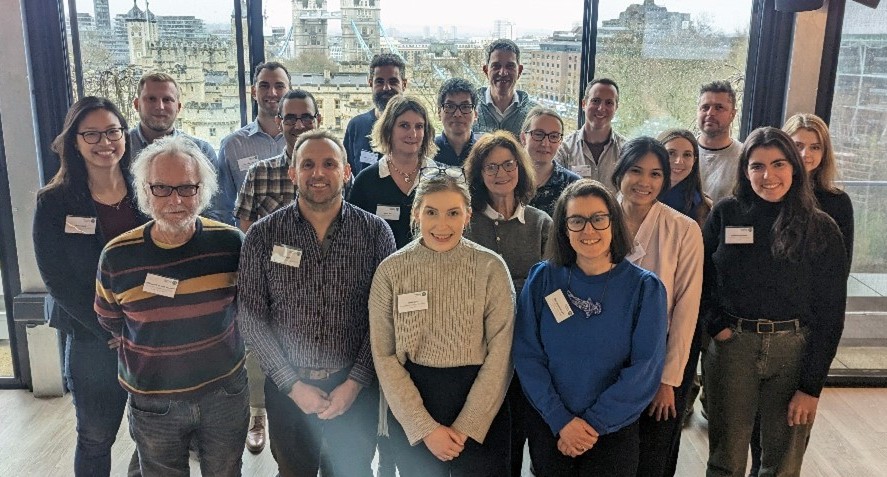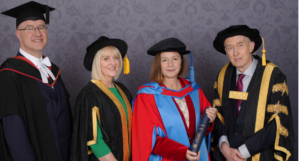How best to monitor, report and verify ocean-based carbon removal?

Leading academics, governmental and industry representatives from across the globe gathered in London recently to discuss different approaches to ocean-based carbon dioxide removal as part of a workshop chaired by SeaCURE partners, the University of Exeter and Plymouth Marine Laboratory (PML).
As the urgency of addressing climate change becomes increasingly apparent, there is growing recognition of the need to not only reduce carbon emissions but also actively remove carbon dioxide (CO2) from the atmosphere.
Ocean-based carbon dioxide removal (oCDR), also known as marine carbon dioxide removal (mCDR), is the process of removing CO2 by utilising marine chemistry or ecosystems. oCDR is a rapidly growing area and has attracted significant interest and investment in recent years.
The focus of the London event was to consider approaches and requirements for the Monitoring, Reporting and Verification (MRV) of engineered carbon removal projects.
In the context of carbon removal, MRV refers to the processes and systems put in place to accurately measure, report and verify the amount of CO2 removed from the atmosphere and then stored.
| What is “engineered” ocean-based carbon removal? A number of different “engineered” carbon removal techniques and processes are being developed and trialled. The two main approaches under current consideration within the scientific and industry community are: Ocean Alkalinity Enhancement Ocean Alkalinity Enhancement involves increasing the alkalinity of seawater (increasing its pH), which enables it to absorb more CO2 from the atmosphere. Direct Ocean Capture or Direct Ocean Removal (DOR) Direct Ocean Capture involves removing dissolved carbon from seawater so it can “refill” with CO2 from the atmosphere. The CO2 is converted into a stable form for storage. |
The challenges for MRV in the context of carbon removal were a key subject of discussion.
These ranged from issues around scalability and levels of acceptability (for regulators, investors and the public) to the costs for MRV and technical aspects such as the capabilities of sensor technologies and the extent to which modelling in addition to pure observation can be utilised.
With the current lack of accepted regulatory frameworks for oCDR, the issue of how to balance the need for adequate incentivisation for the development of oCDR programmes alongside the importance of environmental safeguarding was also highlighted.
“Through projects such as SeaCURE, we’re able to rigorously assess the potential of ocean-based carbon dioxide removal and identify the challenges that may prevent this potential being realised,” said meeting chair Professor Paul Halloran, from the University of Exeter.
“This event highlighted the complexity of MRV for ocean-based carbon removal techniques but also the overlap in terms of the areas that key stakeholder groups are interested in. It was a hugely valuable exercise in finding common ground and also those points of difference, looking at what needs to be measured and how it might be reported, thinking about the frequency and options for monitoring, the costs and technologies involved, and identifying the priorities that need to be addressed in order to move this area forward effectively.”
Professor Tom Bell, from PML, said: “To ensure ocean-based carbon removal is carried out in a sustainable way we need an understanding of what levels of monitoring, reporting and verification, are practicable, acceptable and technically feasible. Getting scientists, government and industry around the table has been great way of working towards some agreed principles of best practice to help build confidence and realise the full potential of oCDR. There was general consensus that acceptable MRV is achievable and that is something that is incredibly positive.”
Professor David Ho, from the University of Hawai’i at Mānoa, said: “There has been increasing interest and momentum for researching mCDR in the United States, and it’s great to see enthusiastic engagement from our colleagues and government agencies in the United Kingdom. MRV is one of the most crucial aspects of mCDR that we need to get right. It’s an area where marine biogeochemists can make a valuable contribution, and that’s why I was excited to participate in the SeaCURE MRV Workshop. I hope that [C]Worthy can collaborate with SeaCURE on MRV in the future.”
Dr Sophie Gill, Marine Carbon Removal Lead at Isometric, a carbon removal registry which develops protocols for carbon credits, said: “It’s very interesting to understand the diverse perspectives across the carbon removal community and gain perspectives on the various challenges associated with MRV. That is really important to us when it comes to building MRV protocols in order to ensure they are both scientifically rigorous and operable – so that we can facilitate scaling in a responsible way.”
Dr Christopher Pearce, Principal Marine Geoscientist at the NOC and scientific lead of the SEAO2-CDR Horizon Europe research programme, said: “Establishing rigorous, achievable and affordable MRV processes is critical for ensuring that oCDR approaches can be tested, developed and, where appropriate, implemented in an environmentally safe, socially acceptable and economically viable way. This workshop was a great opportunity to hear cross-sectoral perspectives on MRV requirements, and the discussions helped identify many of the current challenges and future priorities for progressing this important topic.”
In addition to Plymouth Marine Laboratory (PML) and the University of Exeter, a wide variety of UK and international groups and organisations were represented, including:
- Department for Environment, Food & Rural Affairs (DEFRA)
- Department for Energy Security & Net Zero (DESNZ)
- Environment Agency
- Heriot-Watt University
- National Oceanography Centre (NOC)
- University of Hawai’i at Mānoa
- University of California, Davis
- Equatic
- [C]Worthy
- Captura
- SeaO2
- Isometric
- Planetary Technologies



